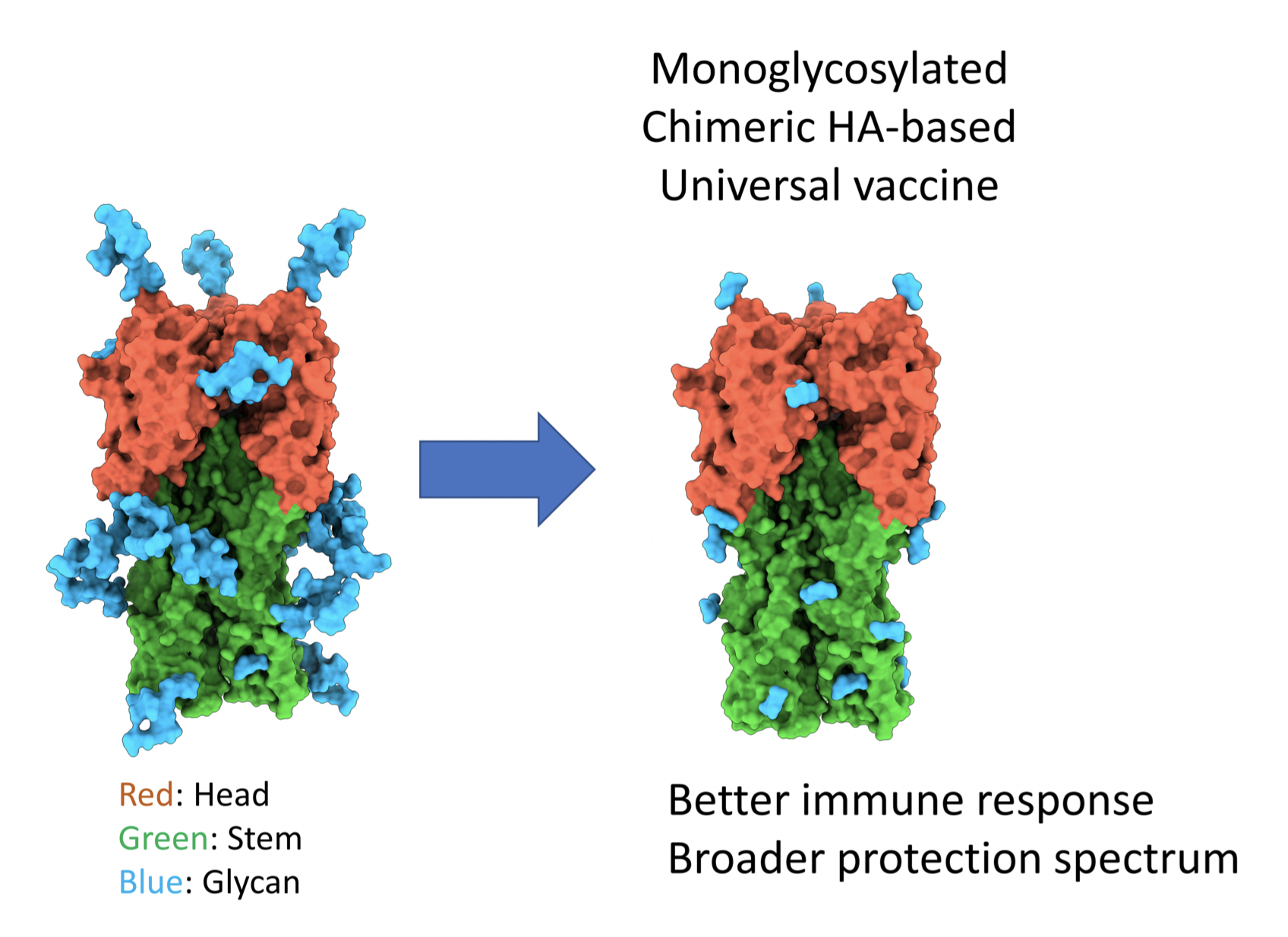Professor Chi-Huey Wong had previously led a group thinking from outside of the box and created a mono-glycan H1N1 flu vaccine that proved effective against multiple flu subtypes. They have outdone themselves again, and this time, they came up with a breakthrough development of a universal anti-influenza vaccine using a designed chimeric hemagglutinin (HA) protein. The resulting immune re-sponses in animal model showed coverages not only on various human influenza strains and subtypes, but also the emerging avian flu. They have published the result online in PNAS on July 15th.
The outbreaks of pandemic influenza have been significant threats to public health. Major impacts were set by the emergence of the 2009 swine-oriented H1N1, and the highly pathogenic avian influenza H5N1, H5N2, and H7N9. A major concern is that that avian influenza virus may mutate and acquire the ability for efficient transmission in humans. Vaccination is still the most effective method for protecting human from influenza virus infection.
Traditional flu vaccine targets the globular head of HA to prevent the virus from binding to human cells. HA is short for hemagglutinin, a protein found on the virus surface. The whole trick lies on the constantly mutating globular head of HA that makes vaccine development hard to catch up. In addition, the antibodies induced by a specific influenza virus subtype have little chance to neutralize other influenza strains and subtypes. Therefore, development of a universal influenza vaccine to overcome these problems has become a major effort recently.
The HA protein has 7 amino acids with abundant glycans attached on. Previous delivered vaccines were derived from HA of the H1N1 strain with glycans trimmed to a monosaccharide per site. In order to increase the strength and coverage, they came up with an innovative approach. They played with the HA proteins of different subtypes of the A type influenza and created man-made HAs assembled from top and bottom parts from different subtype HA proteins. They called it the chimeric HA (cHA).
The first author of this research, Dr. Hsin-Yu Liao did the chimeric vaccine design. She tested a variety of combinations, and came up with the best candidate based on the most common avian influenza H5 and human influenza H1 sequences.
The work was done by first aligning all known H1 and H5 sequences and variants to come up with the consensus sequences for H1 and H5. She then designed various constructs of chimeric HA based on the consensus sequences. It turned out the combination of head part of H5 plus bottom half of H1 makes the best solution. This fushion cHA is able to elicit strong immune responses from CD4+ and CD8+ T-cells.
She then trimmed the glycans on the cHA vaccine to the monoglycosylated glycoform (cHAmg) with only GlcNAc on each glycosite. This cHAmg was able to induce more stem-specific neutralizing antibodies with higher antibody-dependent cellular cytotoxicity (ADCC) and more T-cell killing activities.
 |
As a result, the vaccine showed efficacy against a total of 6 subtypes in animal models and 10 subtypes in in-vitro experiments, and a stronger cross-protection activity against H1, H3, H5 and H7 strains and subtypes. Moreover, the cHAmg vaccine combined with a glycolipid adjuvant further enhanced the vaccine efficacy with more IFN-γ, IL-4 and CD8+ memory T cells produced.
The detailed research is titled “Chimeric hemagglutinin vaccine elicits broadly protective CD4 and CD8 T cell responses against multiple influenza strains and subtypes”. This research project is led by Professor Chi-Huey Wong and supported by Academia Sinica and Summit project. Drs. Ting-Jen Cheng, Che Ma, Kuo-I Lin participated in the project as well. The article can be read online at: https://www.pnas.org/content/early/2020/07/14/2004783117